
Login
X
- Home
- About Us
- Courses
- Graduation
- Diploma Certificate
- Professional Diploma
- Special sessions / Aptitude boost up
- News & Events
- Student zone
- Placement
- Gallery
- FAQ
- Contact Us
Visual communication that blends words, images, and ideas to convey information to the audience is known as graphic design. Visual communication and communication design are other names for graphic design. Graphic design career produce visual responses to your life.
The websites you browse, the commercials you see, the movies you watch, the games you play, and the packaging and logos of the goods you purchase are all the work of graphic designers. While it’s not always possible to teach someone how to have a good eye for design, most graphic designers have gone to art or design school to advance in their graphic design career.
Publishers, design firms, advertising agencies, and other industries that require skilled designers may also hire graphic designers. The majority of designers are able to complete post-graduate or bachelor’s degree programmes, which aid in their technical skill development and enable them to build portfolios of their work that can help them find jobs more quickly after graduation.
Many businesses, including those in advertising, printing, web design, etc., are in need of graphic designers. Tools like Photoshop, Gimp, Flash, Dreamweaver, Fireworks, Illustrator, Blend, and more should be familiar to new designers. But a designer’s career slows down a little after three to four years of experience. Designing requires more individual creativity than a collaborative effort. Improving your skills would greatly benefit your graphic design career.
The compensation of a designer becomes stagnant at a level of INR 4–5 lacs per year after gaining valuable professional expertise for about 6 years. However, with the development of the internet, there is a significant opportunity for freelance designing for numerous clients even when employed by a single organisation. On websites like Instagram, WordPress, Blogger, etc., you can also design, manage, and run your own campaigns to generate extra income from clicks, likes, and visitors.
In recent years, there have been an unprecedented number of graphic design courses. Graphic designers have a plethora of opportunities in the digital world.
You only need to select the educational programme that best matches your present design abilities and graphic design career growth objectives.
It may be necessary for you to enrol in numerous courses that cover various aspects of graphic design, including principles of graphic design, professional logo design, identity design, publishing design, managing digital design projects, and visual communication.
You can consider enrolling in courses that provide more in-depth instruction in the creative process and its practical application in graphic design once you have a basic understanding of design and have learned certain important design abilities.

‘Visual effects’ has become a catch-all phrase. When individuals use this term, they could be referring to invisible effects, which are CG scenes in which the audience isn’t supposed to detect that they’re digital, or digital doubles, which are perfect computer recreations of actual actors. They could also refer to the screen depiction of magic, superpowers, and other elements frequently featured in popular TV and film productions. A VFX artist’s work in the post-production process blends VFX creativity with cutting-edge technological competence, bringing the producers’ or directors’ ideas to life and leaving the end viewer feeling that what they see on screen is real.
VFX is the linking of real-life film that appears sensible but would be dangerous, expensive, impractical, tedious, or difficult to capture on film. Today, visual effects (VFX) are heavily used in almost every movie. VFX creativity is crucial for any program or film based in a fantasy world with mythological animals and magical beings, communicating the fanciful in place of descriptive words.
Thinking about how an effect would react to Earth physics, how a particular character may project their magic or superpower to match their personality, and how we, as artists, make the effect credible are all critical factors when creating our VFX creativity effects. Taking a line from a script and talking with directors, and breathing life into something that improves a production’s visual tapestry is a skill.
There are numerous reasons why you want to work in Visual Effects, and many career routes are available across multiple industries. Creating visual effects is time-consuming, challenging, and highly complex. Because teams are broad and diverse, there are chances for many types of people, from hardcore coders to illustrators and non-artists, who enjoy leading teams. Everyone contributes significantly to the final visual effects. In visual effects, virtual assets are required to match real-world items or to generate new ones that do not exist or are too expensive to develop in the actual world. Modeling artists, texture painters, shader developers, and riggers are generally responsible for creating these.
Whatever technique you select for learning, the most important thing is to begin. It’s as simple as that. Pick up a book, start drawing, watch and analyze a movie, watch visual effects documentaries, and go to local events. Get started. If you don’t have the enthusiasm and motivation for it, no matter how brilliant your education is, you will never succeed.

Choosing the best designing software is essential for success in the interior design field. Selecting the right program or best designing software allows your business to achieve top results and streamline day-to-day operations. The job of an interior designer is not easy, but software solutions are available to assist designers in increasing their efficiency. You’ve come to the best place if you’re looking for the best designing software that properly fulfills your design criteria.
SketchUp is a 3D modeling computer tool for sketching and designing that lets designers personalize their work environment for maximum functionality. Designers may use SketchUp to convert 2D floor plan drawings into customized 3D models. SketchUp offers a generous 30-day trial period for testing the program before committing to one of its three paid membership plans.
Floorplanner provides free and low-cost subscription plans starting at $5 per month to create interior spaces in 3D digitally. With Floorplanner, designers may make an accurate 3D visualization of a room from a 2D floor plan. Floorplanner is suitable for all online browsers and has a phone device that allows you to access it from anywhere.
SmartDraw has an extensive library of predefined templates that may use to create complex, customized 2D floor plans and designs. SmartDraw produces highly polished renderings with user-friendly features such as automatic alignment, formatting, and coloring for professional presentations of 2D drawings. It’s an excellent tool for beginners, but it also has many features that advanced designers can use when working on complex projects.
Planner 5D provides a user-friendly interface for individuals just getting started with CAD software and converting 2D floor layouts into 3D designs. Planner 5D is an excellent alternative for individuals new to interior design software and gives simple-to-use tools. With the Snapshots tool, Planner 5D creates photorealistic 3D renderings.
Chief Architect is a construction design software that provides advanced capabilities for creating highly detailed, customized interior and exterior residential designs. Chief Architect has features that may be ideal for interior designers who collaborate closely with construction managers or architects. It provides details and precision when creating 360-degree panoramic renderings.
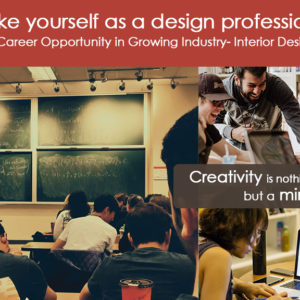
Interior designing is a sort-after career choice that is exclusively for the candidate who wants to have creative liberty. It combines mathematics and arts to create visual harmony and peace. Therefore, some colleges fall under the top 10 interior designing colleges in Kerala and some don’t.
The evaluation is based on
Higher the number of applications and lower the number of seats. hence, Some colleges conduct entrance tests where thousands of students compete for a limited number of seats.
Renowned and well-known faculty with experience and qualifications beyond just teaching. Besides that Some faculty and staff members are well known of top colleges same goes for the alumni. If the students who passed out to become major sharks of the industry, dominating the field. It gives off a well-round reputation for the college or department.
One of the major contributors to being on the list of top 10 colleges in Kerala is affiliation and certification. furthermore, The value of the University the college is associated with is used to determining whether the college goes under the list. Which will ultimately determine the value of your certificate of education.
How equipped the college is in terms of facilitating the course/degree offers makes a huge difference in the ranking of the college. For Interior designing other than just classroom learning to develop the students in creative ways well-equipped studio, laboratory with software such as 3DS Max, Ravit, Sketch-up, etc are necessary. Other extra-curricular activities like expert sessions, site visits, and industrial visits could determine the quality of education provided.
Vismayam College of arts and media falls under one of the top 10 colleges. More than a decade of devotion to perfect the art of teaching. Dedicated faculty and well-equipped studio and facilities for interior designing students. graduates get placement in various firms aided by the college’s placement team.
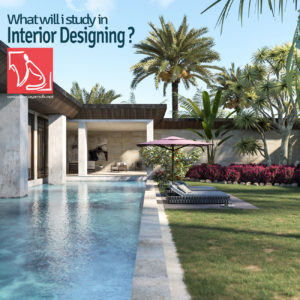
If interior design has always fascinated you, then you should definitely explore career scope in interior design. The aim is
to become a successful interior designer who is skilled in all aspects of designing, be it space planning, furniture
designing, lighting, landscaping, applying fabric finishes or any other design branch. So the big question is-what are the
areas that have to be extensively understood to start working as an interior designer? Read on.
It remains an effective tool to convey ideas. Freehand sketches, proportional drawings, measured
drawings, projections; rendered illustrations- the category is specifically aimed at making you perfect in
conveying your designs to both laymen as well as professionals. Be it furniture, furnishings or views, graphics
help you in effective visual communication.
Design and architecture are constantly evolving. Naturally, one should be well informed about
existing and useful materials when it comes to construction and design of buildings, furniture and other
elements. A thorough knowledge of materials includes information regarding suitable as well as avoidable
materials according to the local climate of an area. Apart from improving efficient designing, the knowledge of
materials is very important in economizing the total designing process and making the project cost efficient.
Design is everywhere, literally. With increasing emphasis on environment, a designer these days
is expected to apply his/her skills not only to the house, but to its surroundings as well. Shrinking spaces have
led to the popularity of interior landscapes as well, such as courtyards and water bodies.
4. FABRICS. Interior fabrics such as carpets, curtains, upholsteries, bed spreads, table linen, kitchen linen to name
a few, add that hint of comfort and supple finish to a well defined interior. One should be aware of the vast
collection of soft furnishings available in the market these days, their uses, advantages and disadvantagesbefore they are applied to an interior.
What makes an interior attractive? The answer to this question forms the content to be learned in
aesthetics. Apart from effective arrangement of individual interior pieces, it is equally important to understand
the design secrets that add the Midas touch. A successful interior is the result of strategic application of design
principles and elements.
Each member of a family has his/her own choice when it comes to design and color. A clever designer is
successful in making the best of all selections and creating interiors that please the whole family. What comes
handy in that situation? A thorough understanding of colors. The right type of color in the right amount results
in the right outcome.
Some designers have keen interest in taking residential projects, others focus on
commercial sectors. When an interior design student is ready to begin his/her practice, they tend to have a fair
idea about their preferred areas. A multitude of specialties exist, such as kitchen design, product design,
furniture design, color consultancy, lighting and so on.
A building needs some essential services such as plumbing, fire and safety, adequate
heating and ventilation and electricity and interior designers make sure that all required services are
incorporated in a structure at the planning stage itself.
It is not just about Vastu or Feng Shui. Space planning requires in-depth knowledge regarding
building laws, bye- laws and related legal insights. It not only saves time in the planning stage itself, but it also
eases out many steps during construction period for both the client and the designer.
Depending on what course you select, you might learn some more or may superficially cover a particular topic during
course duration. The happy news is, learning does not have an expiry date! Armed with a strong theoretical and practical
base, you can make it big with time, perseverance and experience in the field of interior designing

Beautiful spaces need careful planning and fruitful teamwork. Be it any type of space, designers definitely add value to the overall end use and looks of it. So, getting them on board is absolutely sensible. But, should you approach an interior design company or should you seek a freelancer?
While there is no doubt that these services may add to your expenses, however, they cut down both short term and long term liabilities. Here, the real work is to sort out the exact interior design company that will suit your project. Or, if it makes sense, a freelancer. But how do you decide on it?
While a freelancer may be more open to financial negotiation, a design firm may render a more professional service. Now, if you look at the current design industry, there is plenty of work for both freelancers and firms. Both are busy with their respective shares of projects.
For a better understanding, let us talk about an interior design company first. Well, a company has employees and employees need salaries. Add to that, the overheads of running the firm. Yes, such firms need sizable projects to sustain their livelihood. Having a fleet of trained workers and teams cuts down the working time considerably. Which proves more beneficial to the client that the firm charges. You see, time is money.
Then, the fact that they establish a work flow, reduces distractions and confusions, which again fastens the whole design process.
On the other hand, a freelancer is mostly a beginner or someone who works more for the sake of passion. If we talk about a beginner, this designer probably has an internship experience and now wants to self- evaluate. That evaluation may be in terms of creativity, supervision, time management and material management. Generally, internships prepare these designers with the typical work flow a project may demand. Hence, many skilled designers indulge in this practice.
With freelancers, you have a bigger bracket of bargaining and more flexible method of working. Often, the client and the freelancer spend a lot of professional time together. This way, a lot of discussion goes into the details of the project. Of course, freelancers also have their own teams of workers. Naturally, the interactions are more one-to-one than those with a typical interior design company.
Working with an established firm gives you many perks.
With freelancers, you get to experience different advantages.
Be it a house or an office, ultimately, useful design is the product of hard work and talent.
It is this very reason that you see many freelancers in design field. With their talent, perseverance and passion, they keep completing projects to their clients’ satisfaction. And most of the times, they source their works from mouth- to- mouth publicity.
On the other hand, when you entrust your project to an interior design company, the whole procedure becomes a cakewalk. Since they are already familiar with foolproof methods and techniques, You can literally throw away your worries and be a spectator to the progress of work.
There is no hard and fast rule regarding which project for whom. All types of designers can indulge in all types of project. Here, the only things that matter are their creativity and talent in making your design concept come to life.
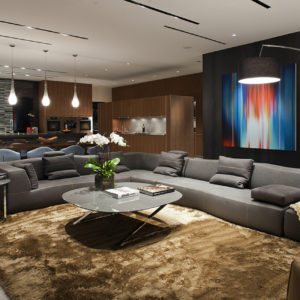
Your home speaks volumes about the person you are. When you decorate your house, you actually make your design statement. Moreover, when you design your house cleverly, your daily routines improves for the better. Now if you think you don’t have the skills, don’t worry. Like the saying goes, stay calm and hire an Interior designer!
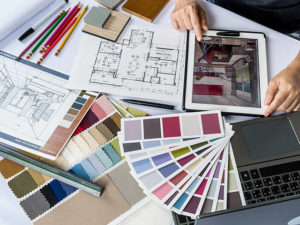
Yes, hiring means paying a service fee. But is it worth the effort? This blog lists down 10 benefits of hiring an Interior Designer.
That precious dream house of yours will definitely improve if a designer plans it. That is because they specialize in creating such spaces. So, you may forget a tiny but important detail while making your plan but they won’t,for sure.

Designers know how to work within a budget. Well, as a first experience, it may prove to be quite overwhelming- designing your house from scratch. But a designer can save your time and money since that’s what they learn and practice. Co-operate with your Interior Designer and see how it works like magic. Also, another misconception is that designers work on big projects only. You should know that a successful designer gets the job done in ANY budget- big or small.
Worried about from where to source that beautiful carpet you spotted elsewhere? Or are you getting confused by the minute about deciding on a flooring option? Here comes a designer to your rescue. A seasoned designer knows which design and material will suit best. He/she has a working relationship with the local markets,suppliers and dealers. In fact, they often crack super saver deals for their clients.

When you decide to renovate or design your interiors, you will either be browsing internet or going through design magazines for “inspiration”. Now, wouldn’t it be way better if your house showcases original creative designs? So, let your Interior designer do that bit.
The living rooms, bedrooms and other spaces in your homes are the evolved answers to man’s spatial needs. Hence, it is always better to customize spaces depending on the families/people who use it. And this is something in which interior designers are experts at. Thus, a cleverly designed interior makes full use of available space to the best functions of the family members.
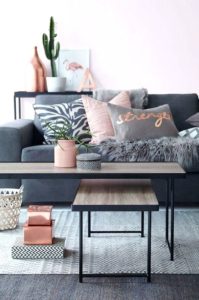
An interior designer may surprise you with the amount of general awareness they have regarding the latest trending style and design elements. Of course, that’s their job. So if you happen to prefer only the latest for your interiors, then a designer is the right person for the best possible looks and feel.
Work on a project with an interior designer to know what you were missing in your own home sweet home! There may be numerous details which you were never aware of before. In fact, some people come to know about the different expectations their own family members have, when they start discussing it with their designers.
Not hiring a designer while designing your house is actually becoming penny-wise and pound-foolish! For a work that can be done in three straight months at the most with the help of a designer, you tend to add months and days to avoid a nominal fee. And so, when you tally, you happen to incur far more losses in terms of time and money when compared to getting the job done by a designer.
Ultimately, it is your personal choice whether or not to hire a designer. We hope the above points help you in taking a sound decision when you contemplate redoing your own abode!
Phone: 0495 272 2242